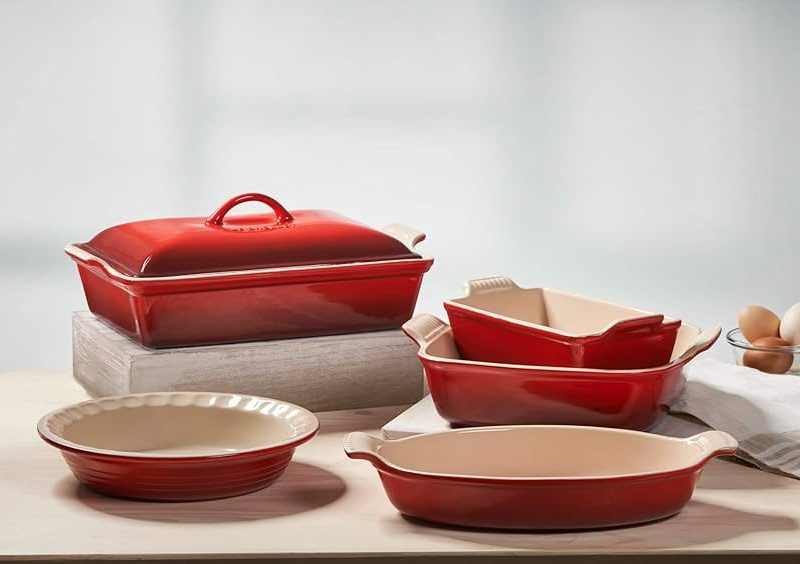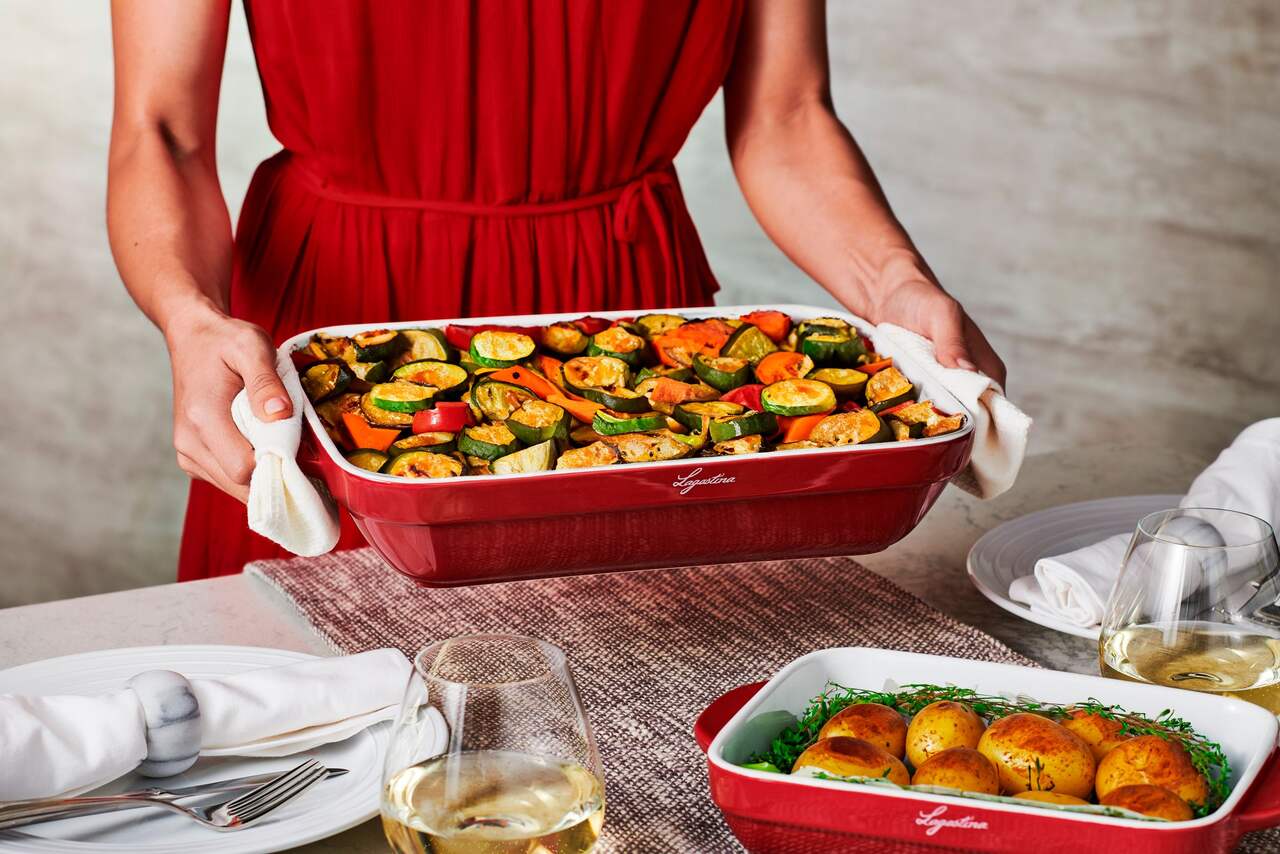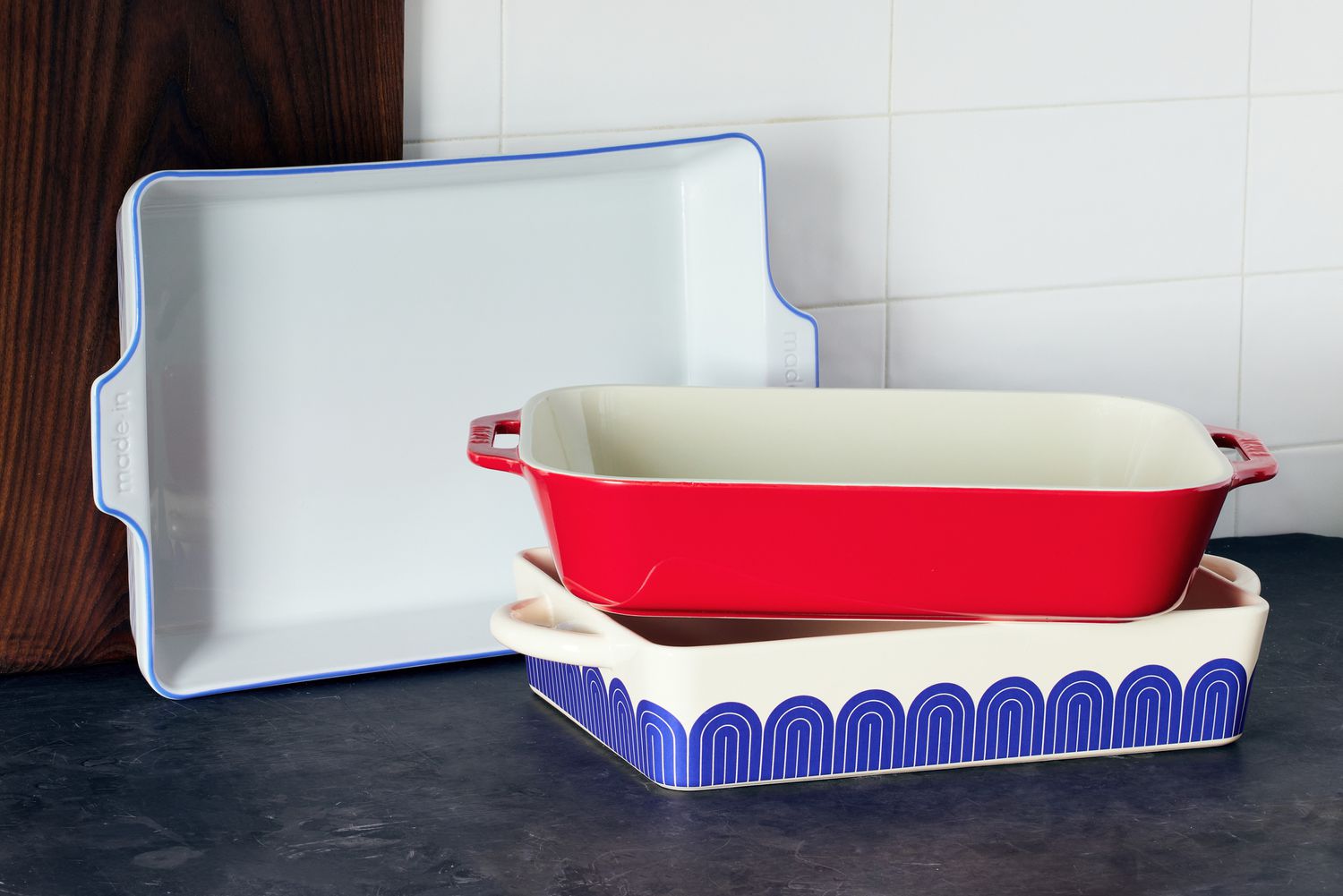
Las sartenes de cerámica son cada vez más populares por su seguridad. Al igual que con cualquier nuevo producto que vale la pena el bombo, utensilios para hornear de cerámica y utensilios de cocina también han planteado su parte justa de preguntas, sobre todo acerca de si es seguro de usar. La Sartén de Cerámica es 100% segura para cocinar y comer con ella, pero como con cualquier utensilio nuevo, definitivamente debe hacer algunas investigaciones antes de traer una nueva sartén de cerámica a su cocina.
¿Por qué la gente se preocupa cada vez más por la seguridad de los utensilios de repostería?
La razón principal son las dudas de la gente sobre la seguridad de las sartenes antiadherentes. Ya en la década de 1950, las sartenes recubiertas de teflón, también conocidas como sartenes antiadherentes, empezaron a ganar popularidad. En aquella época, DuPont desarrolló el revestimiento de teflón, un tipo de politetrafluoroetileno (PTFE), y lo aplicó a las sartenes. Gracias a las excelentes propiedades antiadherentes de este revestimiento, las sartenes de teflón se popularizaron rápidamente en el mercado.
Aunque las sartenes de teflón siguieron siendo populares a finales del siglo XX, a principios del siglo XXI empezaron a surgir dudas sobre la seguridad de los revestimientos de teflón. Los revestimientos de teflón utilizan una sustancia química llamada ácido perfluorooctanoico (PFOA) en el proceso de fabricación. Los estudios han descubierto que el PFOA puede ser perjudicial para la salud humana, incluidos riesgos de cáncer y alteraciones endocrinas.
Los revestimientos de teflón empiezan a descomponerse a temperaturas superiores a 260 grados Celsius (500 grados Fahrenheit), liberando gases tóxicos. Estos gases son potencialmente peligrosos para la salud humana, especialmente en un entorno de cocina doméstica, donde pueden comprometer la seguridad si las sartenes se calientan a una temperatura demasiado alta. Aunque DuPont empezó a eliminar progresivamente el PFOA en 2013, la preocupación pública por sus riesgos para la salud ya ha atraído una amplia atención.
Con el desarrollo de la tecnología, han aparecido en el mercado muchos nuevos materiales para sartenes antiadherentes, como las sartenes de cerámica, las sartenes compuestas de acero inoxidable, etc. En general, estos nuevos materiales se consideran más seguros y respetuosos con el medio ambiente. A diferencia de las sartenes antiadherentes de teflón, las sartenes de cerámica son cada vez más populares debido a su seguridad. Los materiales cerámicos no suelen contener productos químicos tóxicos y son resistentes al calor. Pueden soportar temperaturas de hasta 450 grados Celsius y no liberan humos tóxicos cuando se calientan a altas temperaturas. Por lo tanto, es una mejor opción desde el punto de vista de la seguridad. Cambiar a una batería de cocina no tóxica es un paso clave hacia una vida sana.

¿Cómo elegir cacerolas seguras?
Si ha estado navegando por Internet en busca de nuevas sartenes para hornear o cocinar, probablemente habrá visto que algunos sitios utilizan palabras como "sin PFOA" o "sin PFA" para describirlas. PFAS, PTFE, PFOA: ¿Qué significan? Dejemos las cosas claras.
- PFAS: Abreviatura de sustancias per y polifluoradas, las PFAS son un grupo de sustancias químicas que se han utilizado en productos de consumo desde la década de 1940. Además de en las sartenes antiadherentes, se encuentran en muchos artículos cotidianos, como muebles resistentes a las manchas, ropa impermeable y cosméticos.
- PFOA: El ácido perfluorooctanoico se prohibió en EE.UU. porque los estudios han demostrado que causa defectos de nacimiento, cáncer y alteraciones hormonales.
- PTFE: También conocido como politetrafluoroetileno (el teflón es un tipo de PTFE). Al igual que el PFOA, forma parte de la familia de los PFAS, pero se sigue utilizando hoy en día. Muchas sartenes antiadherentes tradicionales contienen PTFE, que puede liberar gases tóxicos si se sobrecalienta.
Elegir sartenes nuevas puede ser una tarea desalentadora porque hay muchos materiales entre los que elegir. Para hacer la elección correcta para la salud humana, elija sartenes de cerámica pura o con revestimiento cerámico. Es importante evitar cualquier sartén que contenga productos químicos potencialmente tóxicos como PFOA, PFAS, PTFE o cualquier metal pesado que se haya relacionado con efectos secundarios graves en el cuerpo humano.
Tanto las sartenes de cerámica pura como las revestidas de cerámica retienen el calor y lo distribuyen uniformemente. Las sartenes de cerámica pura tienen paredes gruesas y son más pesadas de transportar o mover por la cocina, por lo que son las más adecuadas para quienes prefieren una sensación más pesada en sus necesidades culinarias. Por el contrario, las sartenes con revestimiento cerámico son más ligeras. Independientemente de que elija sartenes de cerámica pura o con revestimiento cerámico, cualquier tipo de sartén puede ser una gran elección, dependiendo de las necesidades culinarias de cada persona.

Comprender las cacerolas de cerámica
El material principal de las vasijas cerámicas es la arcilla de alta calidad, que suele mezclarse con varios tipos diferentes de arcilla para conseguir las propiedades físicas y químicas deseadas. La pasta de arcilla se vierte en un molde de escayola y se solidifica para formar una pieza en bruto de cerámica.
Tras la cocción a una temperatura y un tiempo determinados, se quema la materia orgánica de la cerámica en bruto, lo que aumenta su dureza y resistencia. A continuación, hay que esmaltarlo para que la superficie de la vasija cerámica sea lisa y se forme una capa similar al vidrio. Estos esmaltes suelen ser una mezcla de silicio, óxido de aluminio, óxido de calcio y otros óxidos. La cerámica esmaltada se vuelve a meter en el horno para formar un esmalte liso y duro.
Las ollas de cerámica ofrecen una superficie antiadherente natural y no se utilizan productos químicos tóxicos en el proceso de producción. Tanto en la selección de las materias primas como en el proceso de fabricación, el impacto en el medio ambiente es mínimo. Las ollas de cerámica son una opción sostenible y respetuosa con el medio ambiente, además de garantizar una experiencia culinaria saludable desde muchos puntos de vista.

Ventajas de las sartenes de cerámica
Naturalmente antiadherente
Las sartenes de cerámica tienen una superficie antiadherente natural. A diferencia de las sartenes antiadherentes tradicionales, el revestimiento cerámico consigue sus propiedades antiadherentes gracias a su estructura física y no a aditivos químicos. Cuando se cuece a altas temperaturas en un horno, el esmalte se funde y se fusiona con la cerámica para formar una superficie dura e impermeable.
Fácil de limpiar
La superficie antiadherente natural de las sartenes cerámicas no se adhiere fácilmente a los restos de comida y grasa, por lo que su limpieza resulta más cómoda. Los materiales cerámicos tienen propiedades antimanchas y es difícil que se manchen con los pigmentos y las manchas de los alimentos. Aunque queden residuos, son fáciles de limpiar.
Resistencia a la corrosión química
Las sartenes cerámicas son muy resistentes a los productos de limpieza ácidos y alcalinos, y pueden limpiarse con una gran variedad de productos de limpieza habituales en la cocina sin dañar la superficie.
No interactúa con los alimentos
Una de las ventajas más importantes de utilizar sartenes de cerámica es la inercia de su material. Esto significa que no interactuará con los alimentos que se cocinen. Algunos metales producen sabores desagradables o reaccionan químicamente con alimentos ácidos, como los tomates o el zumo de limón. Esta característica es crucial para quienes buscan el sabor más puro y las condiciones de cocción más seguras.
Distribución uniforme del calor
Las sartenes de cerámica son conocidas por su capacidad para distribuir uniformemente el calor, lo que garantiza una cocción homogénea de los platos. Esta propiedad se debe a las propiedades naturales de la cerámica, que es un excelente conductor del calor. La cerámica absorbe el calor lentamente y lo distribuye uniformemente. Esto es especialmente útil para platos sensibles a la temperatura, como salsas o chocolate, en los que la consistencia de la temperatura puede tener un gran impacto en el resultado final.
Mantener la comida caliente
Las sartenes cerámicas retienen el calor eficazmente, lo que contribuye a su rendimiento de cocción uniforme. Una vez alcanzada la temperatura deseada, las sartenes cerámicas mantienen esa temperatura, permitiendo que los alimentos se cocinen completamente sin tener que ajustar constantemente la fuente de calor. Esto significa que los platos pueden mantenerse calientes durante más tiempo, incluso cuando están alejados de la fuente de calor. Ya se trate de guisar, saltear, hornear o freír, las sartenes de cerámica proporcionan un entorno de cocción fiable y estable.
Consejos para cuidar sus sartenes de cerámica
Evitar el uso de utensilios metálicos
Para que la superficie antiadherente de las sartenes cerámicas se mantenga intacta, evite utilizar utensilios metálicos o fregar con materiales abrasivos. Utilice utensilios de madera, silicona o nylon para evitar rayar la superficie de la olla. No corte los alimentos directamente en la olla para evitar dañar el esmalte.
Evitar diferencias drásticas de temperatura
Cuando utilice cacerolas de cerámica, tenga cuidado de evitar cambios drásticos de temperatura, como colocar una cacerola fría directamente sobre una llama caliente, o introducir inmediatamente una cacerola en agua fría después de sacarla de una temperatura caliente. Estos choques de temperatura dañan la superficie antiadherente y pueden hacer que las sartenes de cerámica se dilaten, se contraigan y se agrieten.
Limpiar regularmente
Asegúrese de limpiar la sartén con regularidad, utilizando un detergente neutro suave y un paño o esponja suave para lavar la sartén. No utilice cepillos metálicos ni utensilios de limpieza duros. Para las manchas difíciles, friegue suavemente con una pasta hecha de bicarbonato sódico y una pequeña cantidad de agua, o déjela en remojo en agua caliente durante un tiempo antes de limpiarla.
Compruebe regularmente
Comprueba regularmente si la olla presenta grietas o daños, y sustitúyela si detectas algún problema. Manéjela con cuidado durante su uso y almacenamiento para evitar choques y caídas. Si apila varias ollas de cerámica, se recomienda colocar un paño suave o una toalla de papel entre cada olla para evitar que se golpeen entre sí.

Preguntas frecuentes sobre sartenes de cerámica
¿Se pueden utilizar sartenes de cerámica en el horno?
Sí, las sartenes de cerámica se pueden utilizar en el horno. La cerámica es una opción excelente frente a otros tipos de utensilios de cocina porque distribuye el calor uniformemente y lo retiene bien. Su durabilidad y baja porosidad también la hacen ideal para cocinar a altas temperaturas, por lo que es versátil y perfecta para una cocina ajetreada. Antes de utilizar cualquier tipo de utensilio de cerámica en el horno, lea siempre atentamente las instrucciones de cuidado para garantizar los mejores resultados.
¿Se puede utilizar cerámica en el microondas?
Por supuesto, se pueden utilizar con seguridad en el microondas, pero tenga en cuenta lo siguiente: Asegúrese de que no hay adornos metálicos ni bordes dorados en los utensilios de cocina, ya que el metal puede provocar chispas y dañar el microondas. Antes de usarla, es mejor consultar las instrucciones del fabricante para confirmar que está marcada como apta para microondas. En general, la mayoría de las cacerolas de cerámica sin adornos metálicos son aptas para su uso en el microondas.
¿Se pueden lavar las cacerolas de cerámica en el lavavajillas?
Sí, las cacerolas de cerámica son generalmente seguras para limpiar en el lavavajillas, y lavar utensilios de cocina de cerámica en el lavavajillas es una manera muy eficaz y de bajo costo para limpiar a fondo. Cuando decida utilizar un lavavajillas, lea siempre las instrucciones del fabricante y asegúrese de que el lavavajillas que utiliza no está ajustado a una temperatura demasiado alta o a un nivel de potencia demasiado alto para las cacerolas de cerámica.
¿Son buenas para la salud las sartenes de cerámica?
Sí, las sartenes de cerámica son buenas para la salud. Cuando compre sartenes de cerámica, asegúrese de que el esmalte utilizado para sellar la cerámica no contenga plomo, urea ni sustancias tóxicas. Este tipo de sartén es seguro para cualquier preparación o almacenamiento de alimentos. Los dueños de animales domésticos suelen utilizar cacerolas de cerámica porque son mucho menos nocivas para sus mascotas que muchos otros materiales disponibles.
Además, las ollas de cerámica no retienen olores como los recipientes de plástico o metal y no son propensas a la corrosión. La capacidad de retención del calor de las ollas y sartenes de cerámica las hace ideales para cocinar a fuego lento (bajo y medio) una gran variedad de platos, creando platos nutritivos y sabrosos. Por último, las ollas de cerámica son muy fáciles de limpiar y mantener, lo que le permite disfrutar de las comidas más seguras y saludables posibles.
¿Qué no debe poner en sus sartenes de cerámica?
Evite utilizar utensilios metálicos afilados, lana de acero y artículos de nylon abrasivos. Estos utensilios pueden rayar la superficie de las sartenes de cerámica e incluso hacer que se astillen si se utilizan con regularidad. Es mejor utilizar utensilios de madera o silicona para sacar el máximo partido a las sartenes de cerámica.

Conclusión
Siempre que las cuide bien, las sartenes de cerámica son una opción segura y saludable para su familia. Con unos sencillos consejos, podrá mantener sus utensilios de cerámica en buen estado y garantizar la seguridad de sus seres queridos.
Cerámica Jinhua - Fabricante profesional de sartenes de cerámica
Cerámica Jinhua es una empresa experta en sartenes de cerámica, dedicada a proporcionar a los consumidores utensilios de cerámica para hornear y cocinar de alta calidad, no tóxicos y exquisitos. A través de la innovación continua y estrictos procesos de producción, hemos creado una variedad de estilos de sartenes de cerámica para satisfacer diferentes necesidades de cocina. Tanto si se trata de la cocina diaria como de la cocina de alta gama, Jinhua Ceramic venta al por mayor sartenes de cerámica puede ayudar a las personas a conseguir fácilmente una experiencia culinaria perfecta. Si busca un socio de confianza para la fabricación de utensilios de cocina y reposteríaElija Jinhua Ceramic, seremos su socio de confianza.




